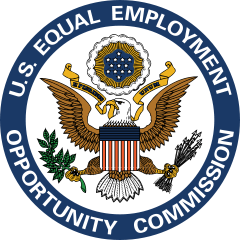 On August 29, 2013, the U.S. Department of Justice (DOJ) announced that it will not challenge the state ballot initiatives in Colorado and Washington that legalize the possession and use of small amounts of marijuana under state law. The DOJ makes clear, however, that marijuana remains an illegal drug under the federal Controlled Substances Act. This clarification means Colorado employers may still enforce their drug-free workplace policies and take appropriate action when an employee or applicant tests positive for marijuana.
On August 29, 2013, the U.S. Department of Justice (DOJ) announced that it will not challenge the state ballot initiatives in Colorado and Washington that legalize the possession and use of small amounts of marijuana under state law. The DOJ makes clear, however, that marijuana remains an illegal drug under the federal Controlled Substances Act. This clarification means Colorado employers may still enforce their drug-free workplace policies and take appropriate action when an employee or applicant tests positive for marijuana.
DOJ Expects States to Enforce Strict Regulatory Schemes
In its August 29, 2013 Guidance Regarding Marijuana Enforcement, the DOJ identifies eight enforcement priorities for federal law enforcement and prosecutors, such as preventing distribution of marijuana to minors, preventing the diversion of marijuana from states where it is legal to other states, and preventing drugged driving and the exacerbation of other public health consequences of marijuana use. The DOJ states that it expects that states and local governments to not only establish, but also enforce robust controls in their marijuana regulatory schemes to meet its federal objectives. The guidance instructs federal prosecutors to review marijuana cases on an individual basis, weighing all available information and evidence but to no longer “consider the size or commercial nature of a marijuana operation alone as a proxy for assessing whether marijuana trafficking implicates the Department’s enforcement priorities . . .” The DOJ further stated that if states fail to develop or enforce a strict regulatory scheme and the stated harms result, federal prosecutors will step in to enforce federal marijuana priorities and may challenge the regulatory schemes in those states.
Courts in Colorado Uphold Employer Terminations for Employee Marijuana Use
In April 2013, the Colorado Court of Appeals ruled that terminating an employee who tested positive for marijuana following his off-duty, off-premises use of medical marijuana did not violate Colorado’s lawful activities statute. Coats v. Dish Network LLC, 2013 COA 62. Brandon Coats, a quadriplegic who obtained a license to use medical marijuana under Colorado’s Amendment 20, was fired for violating his employer’s drug policy after testing positive for marijuana. Coats asserted that he never used marijuana on his employer’s premises, was never under the influence of marijuana at work and never used marijuana outside the limits of his medical marijuana license. He sued his employer, Dish Network, alleging that his termination violated Colorado’s lawful off-duty activities statute, CRS § 24-34-402.5(1), which prohibits an employer from discharging an employee for engaging in “any lawful activity off the premises of the employer during nonworking hours.”
The Coats court looked to the plain meaning of the term “lawful” in the statute and decided that “for an activity to be ‘lawful’ in Colorado, it must be permitted by, and not contrary to, both state and federal law.” Because marijuana was, and remains, illegal under federal law, the court held that marijuana use is not a “lawful activity” under the Colorado lawful activities statute and therefore, the employer did not violate the statute when it terminated him for testing positive for marijuana.
Earlier this week, the federal district court in Colorado ruled that enforcement of a drug-free workplace policy is a lawful basis for an employer’s decision to terminate an employee who tests positive for marijuana, whether from medical or any other use. Curry v. MillerCoors, Inc., No. 12-cv-2471 (Order Granting Motion to Dismiss, D.Colo. Aug. 21, 2013). In granting the employer’s motion to dismiss, the federal court rejected all of the former employee’s claims related to his medical use of marijuana that resulted in a positive drug test and his termination under the employer’s drug policy. Significantly, the court dismissed his disability discrimination claim under Colorado’s anti-discrimination statute as a matter of law, finding that it was lawful for the employer to discharge the employee under its drug-free workplace policy despite the employee’s allegation that he was terminated because of using medical marijuana to treat disabling medical conditions. Judge John L. Kane wrote “anti-discrimination law does not extend so far as to shield a disabled employee from the implementation of his employer’s standard policies against employee misconduct.” In dismissing the employee’s claim for violation of Colorado’s lawful activities statute, Judge Kane relied on the Coats decision and similarly ruled that because marijuana use is illegal under federal law, the employee’s medical marijuana use was not a “lawful activity” under the statute.
DOJ’s Announcement Should Not Change Workplace Decisions
The DOJ’s announcement of relaxed marijuana enforcement in states that have legalized marijuana does not alter employers’ ability to enforce their drug-free workplace policies. On the contrary, because the DOJ reinforced that marijuana remains an illegal drug under federal law, the analysis used by courts in Colorado to uphold termination decisions based on positive drug tests should continue to apply. Employers should create or revise their drug policies to state that use of any drug that is illegal under state or federal law will violate the policy. Employers then should enforce their policies in a consistent and uniform manner, regardless of the legalization of marijuana use in Colorado.
Disclaimer:This article is designed to provide general information on pertinent legal topics. The statements made are provided for educational purposes only. They do not constitute legal advice and are not intended to create an attorney-client relationship between you and Holland & Hart LLP. If you have specific questions as to the application of the law to your activities, you should seek the advice of your legal counsel.


